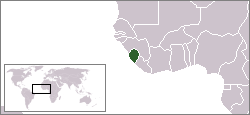|
Hydrillodes Janalis
''Hydrillodes janalis'' is a species of moth of the family Erebidae described by William Schaus and W. G. Clements in 1893. It is endemic to Sierra Leone. See also *List of moths of Sierra Leone There are about 760 known moth species of Sierra Leone. The moths (mostly nocturnal) and butterflies (mostly diurnal) together make up the taxonomic order Lepidoptera. This is a list of moth species which have been recorded in Sierra Leone. ... References Endemic fauna of Sierra Leone Herminiinae Moths described in 1893 Moths of Africa Taxa named by William Schaus {{Herminiinae-stub ... [...More Info...] [...Related Items...] OR: [Wikipedia] [Google] [Baidu] |
William Schaus
William Schaus (January 11, 1858 in New York City – June 20, 1942) was an American Entomology, entomologist who became known for his major contribution to the knowledge and description of new species of the Neotropical realm, Neotropical Lepidoptera. Life William Schaus, Jr. was son of Wilhelm, later William Schaus, Sr. (1820–1892), a Germany, German-immigrant art collector and dealer, proprietor of the Schaus Galleries in New York City, and of Margaret Connover. He was educated initially at Phillips Exeter Academy, Exeter Academy and then in France and Germany, and was influenced early in his career by Henry Edwards (entomologist), Henry Edwards, although he also studied languages, art and music. Schaus received the honorary degree of Master of Arts from the University of Wisconsin–Madison, University of Wisconsin in 1921, and in 1925 that of honorary Doctor of Science from the University of Pittsburgh. He decided, despite parental opposition, and at the sacrifice of a prom ... [...More Info...] [...Related Items...] OR: [Wikipedia] [Google] [Baidu] |
Moth
Moths are a paraphyletic group of insects that includes all members of the order Lepidoptera that are not butterflies, with moths making up the vast majority of the order. There are thought to be approximately 160,000 species of moth, many of which have yet to be described. Most species of moth are nocturnal, but there are also crepuscular and diurnal species. Differences between butterflies and moths While the butterflies form a monophyletic group, the moths, comprising the rest of the Lepidoptera, do not. Many attempts have been made to group the superfamilies of the Lepidoptera into natural groups, most of which fail because one of the two groups is not monophyletic: Microlepidoptera and Macrolepidoptera, Heterocera and Rhopalocera, Jugatae and Frenatae, Monotrysia and Ditrysia.Scoble, MJ 1995. The Lepidoptera: Form, function and diversity. Oxford, UK: Oxford University Press; 404 p. Although the rules for distinguishing moths from butterflies are not well establishe ... [...More Info...] [...Related Items...] OR: [Wikipedia] [Google] [Baidu] |
Erebidae
The Erebidae are a family of moths in the superfamily Noctuoidea. The family is among the largest families of moths by species count and contains a wide variety of well-known macromoth groups. The family includes the underwings ('' Catocala''); litter moths (Herminiinae); tiger, lichen, and wasp moths (Arctiinae); tussock moths (Lymantriinae), including the arctic woolly bear moth (''Gynaephora groenlandica''); piercing moths ( Calpinae and others); micronoctuoid moths (Micronoctuini); snout moths (Hypeninae); and zales, though many of these common names can also refer to moths outside the Erebidae (for example, crambid snout moths). Some of the erebid moths are called owlets. The sizes of the adults range from among the largest of all moths (> wingspan in the black witch) to the smallest of the macromoths ( wingspan in some of the Micronoctuini). The coloration of the adults spans the full range of dull, drab, and camouflaged (e.g., ''Zale lunifera'' and litter moths) to vi ... [...More Info...] [...Related Items...] OR: [Wikipedia] [Google] [Baidu] |
Endemism
Endemism is the state of a species being found in a single defined geographic location, such as an island, state, nation, country or other defined zone; organisms that are indigenous to a place are not endemic to it if they are also found elsewhere. For example, the Cape sugarbird is found exclusively in southwestern South Africa and is therefore said to be ''endemic'' to that particular part of the world. An endemic species can be also be referred to as an ''endemism'' or in scientific literature as an ''endemite''. For example '' Cytisus aeolicus'' is an endemite of the Italian flora. '' Adzharia renschi'' was once believed to be an endemite of the Caucasus, but it was later discovered to be a non-indigenous species from South America belonging to a different genus. The extreme opposite of an endemic species is one with a cosmopolitan distribution, having a global or widespread range. A rare alternative term for a species that is endemic is "precinctive", which applies to ... [...More Info...] [...Related Items...] OR: [Wikipedia] [Google] [Baidu] |
Sierra Leone
Sierra Leone,)]. officially the Republic of Sierra Leone, is a country on the southwest coast of West Africa. It is bordered by Liberia to the southeast and Guinea surrounds the northern half of the nation. Covering a total area of , Sierra Leone has a tropical climate, with diverse environments ranging from savanna to rainforests. The country has a population of 7,092,113 as of the 2015 census. The capital and largest city is Freetown. The country is divided into five administrative regions, which are subdivided into Districts of Sierra Leone, 16 districts. Sierra Leone is a constitutional republic with a unicameral parliament and a directly elected executive president, president serving a five-year term with a maximum of two terms. The current president is Julius Maada Bio. Sierra Leone is a Secular state, secular nation with Constitution of Sierra Leone, the constitution providing for the separation of state and religion and freedom of conscience (which includes freedom of ... [...More Info...] [...Related Items...] OR: [Wikipedia] [Google] [Baidu] |
List Of Moths Of Sierra Leone
There are about 760 known moth species of Sierra Leone. The moths (mostly nocturnal) and butterflies (mostly diurnal) together make up the taxonomic order Lepidoptera. This is a list of moth species which have been recorded in Sierra Leone. Adelidae *'' Nemophora parvella'' (Walker, 1863) Anomoeotidae *'' Anomoeotes leucolena'' Holland, 1893 *'' Anomoeotes tenellula'' Holland, 1893 *'' Anomoeotes triangularis'' Jordan, 1907 Arctiidae *'' Acantharctia mundata'' (Walker, 1865) *'' Afraloa bifurca'' (Walker, 1855) *'' Afrasura hyporhoda'' (Hampson, 1900) *'' Afrasura obliterata'' (Walker, 1864) *'' Afrowatsonius marginalis'' (Walker, 1855) *''Alpenus investigatorum'' (Karsch, 1898) *'' Alpenus maculosa'' (Stoll, 1781) *'' Amata basithyris'' Hampson, 1914 *'' Amata divalis'' (Schaus & Clements, 1893) *'' Amata francisca'' (Butler, 1876) *'' Amata marina'' (Butler, 1876) *'' Amata tomasina'' (Butler, 1876) *'' Amerila brunnea'' (Hampson, 1901) *'' Amerila leucoptera'' (Hampson, ... [...More Info...] [...Related Items...] OR: [Wikipedia] [Google] [Baidu] |
Endemic Fauna Of Sierra Leone
Endemism is the state of a species being found in a single defined geographic location, such as an island, state, nation, country or other defined zone; organisms that are indigenous to a place are not endemic to it if they are also found elsewhere. For example, the Cape sugarbird is found exclusively in southwestern South Africa and is therefore said to be ''endemic'' to that particular part of the world. An endemic species can be also be referred to as an ''endemism'' or in scientific literature as an ''endemite''. For example '' Cytisus aeolicus'' is an endemite of the Italian flora. '' Adzharia renschi'' was once believed to be an endemite of the Caucasus, but it was later discovered to be a non-indigenous species from South America belonging to a different genus. The extreme opposite of an endemic species is one with a cosmopolitan distribution, having a global or widespread range. A rare alternative term for a species that is endemic is "precinctive", which applies to ... [...More Info...] [...Related Items...] OR: [Wikipedia] [Google] [Baidu] |
Herminiinae
The Herminiinae are a subfamily of moths in the family Erebidae. The members of the subfamily are called litter moths because the caterpillars of most members feed on dead leaves of plants, though others feed on living leaves, and/or the mushrooms of fungi as in the case of genus Idia (moth). Taxonomy The subfamily was previous treated as a separate family, Herminiidae, or as a subfamily of the family Noctuidae. Phylogenetic analysis has determined that the Herminiinae are most closely related to the subfamily Aganainae of the Erebidae. Genera *'' Aristaria'' *''Bleptina'' *''Carteris'' *''Chytolita'' *'' Drepanopalpia'' *''Herminia'' *'' Hydrillodes'' *''Hypenula'' *''Idia'' *''Lascoria'' *''Macristis'' *'' Macrochilo'' *''Nodaria'' *''Orectis'' *''Palthis'' *''Paracolax'' *''Phalaenophana'' *''Phalaenostola'' *''Phlyctaina'' *''Physula'' *''Polypogon'' *''Reabotis'' *''Redectis'' *'' Rejectaria'' *'' Renia'' *'' Simplicia'' *'' Tetanolita'' *'' Zanclognatha'' Example sp ... [...More Info...] [...Related Items...] OR: [Wikipedia] [Google] [Baidu] |
Moths Described In 1893
Moths are a paraphyletic group of insects that includes all members of the order Lepidoptera that are not butterflies, with moths making up the vast majority of the order. There are thought to be approximately 160,000 species of moth, many of which have yet to be described. Most species of moth are nocturnal, but there are also crepuscular and diurnal species. Differences between butterflies and moths While the butterflies form a monophyletic group, the moths, comprising the rest of the Lepidoptera, do not. Many attempts have been made to group the superfamilies of the Lepidoptera into natural groups, most of which fail because one of the two groups is not monophyletic: Microlepidoptera and Macrolepidoptera, Heterocera and Rhopalocera, Jugatae and Frenatae, Monotrysia and Ditrysia.Scoble, MJ 1995. The Lepidoptera: Form, function and diversity. Oxford, UK: Oxford University Press; 404 p. Although the rules for distinguishing moths from butterflies are not well establishe ... [...More Info...] [...Related Items...] OR: [Wikipedia] [Google] [Baidu] |
Moths Of Africa
Moths are a paraphyletic group of insects that includes all members of the order Lepidoptera that are not butterflies, with moths making up the vast majority of the order. There are thought to be approximately 160,000 species of moth, many of which have yet to be described. Most species of moth are nocturnal, but there are also crepuscular and diurnal species. Differences between butterflies and moths While the butterflies form a monophyletic group, the moths, comprising the rest of the Lepidoptera, do not. Many attempts have been made to group the superfamilies of the Lepidoptera into natural groups, most of which fail because one of the two groups is not monophyletic: Microlepidoptera and Macrolepidoptera, Heterocera and Rhopalocera, Jugatae and Frenatae, Monotrysia and Ditrysia.Scoble, MJ 1995. The Lepidoptera: Form, function and diversity. Oxford, UK: Oxford University Press; 404 p. Although the rules for distinguishing moths from butterflies are not well establis ... [...More Info...] [...Related Items...] OR: [Wikipedia] [Google] [Baidu] |


.jpg)
.jpg)



